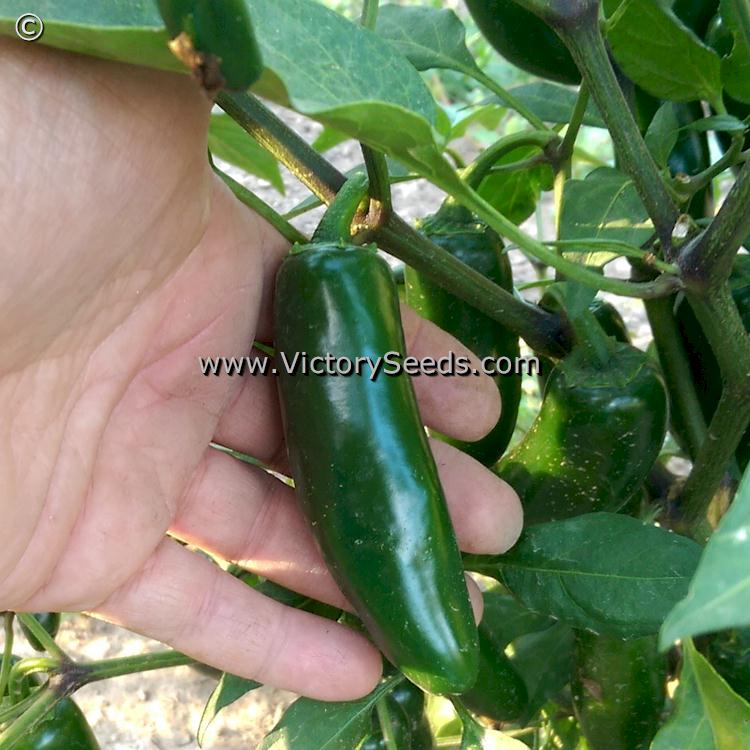Jalapeno Hot Pepper (Organic)
Jalapeno Hot Pepper (Organic)
Couldn't load pickup availability

72 days — Jalapeño is probably the most well-known of all hot peppers, and deservedly so. The plants are erect and sturdy and although very productive, generally do not require caging or other support. The fruit are dark green, tapered, three inches by one inch, turning red when mature. Jalapeño peppers can range from 2,500 to 10,000 Scoville Units in heat.
The fruit have thick walls which means that they do not dry well as whole peppers, but they are excellent for canning, pickling or used fresh in salsas. They are also popular as a flavoring in such foods as cheeses, pickles, cornbread, Jalapeño "poppers," chips, and even beer. For the adventurous, you can also find recipes for Jalapeño chocolate chip cookies and Jalapeño ice cream!
Because they are so versatile, we almost always find space for Jalapeño peppers in our garden. In a typical Oregon growing season they don't get as hot as they did when we gardened in Northern California, but they still give that kick to recipes that we are looking for. Each packet contains 0.25 grams, which is approximately 30 seeds.




Explore our vegetable collections:
[ Artichokes | Asparagus | Beans | Beets | Broccoli | Sorghums | Brussels Sprouts | Cabbage | Cantaloupe | Carrots | Cauliflower | Celery | Collard Greens | Corn | Cucumber | Eggplant | Endives | Gourds | Kale | Kohlrabi | Leeks | Lettuce | Mesclun Mix | Mustard Greens | Okra | Onions | Parsley | Edible Pod Peas | Garden Peas | South Peas | Hot Peppers | Mild Peppers | Pumpkins | Radishes | Rapini | Rhubarb | Salad Greens | Salsify | Summer Squash | Winter Squash | Swiss Chard | Tomatillo | Tomatoes | Dwarf Tomato Project | Turnips | Watermelons ]




